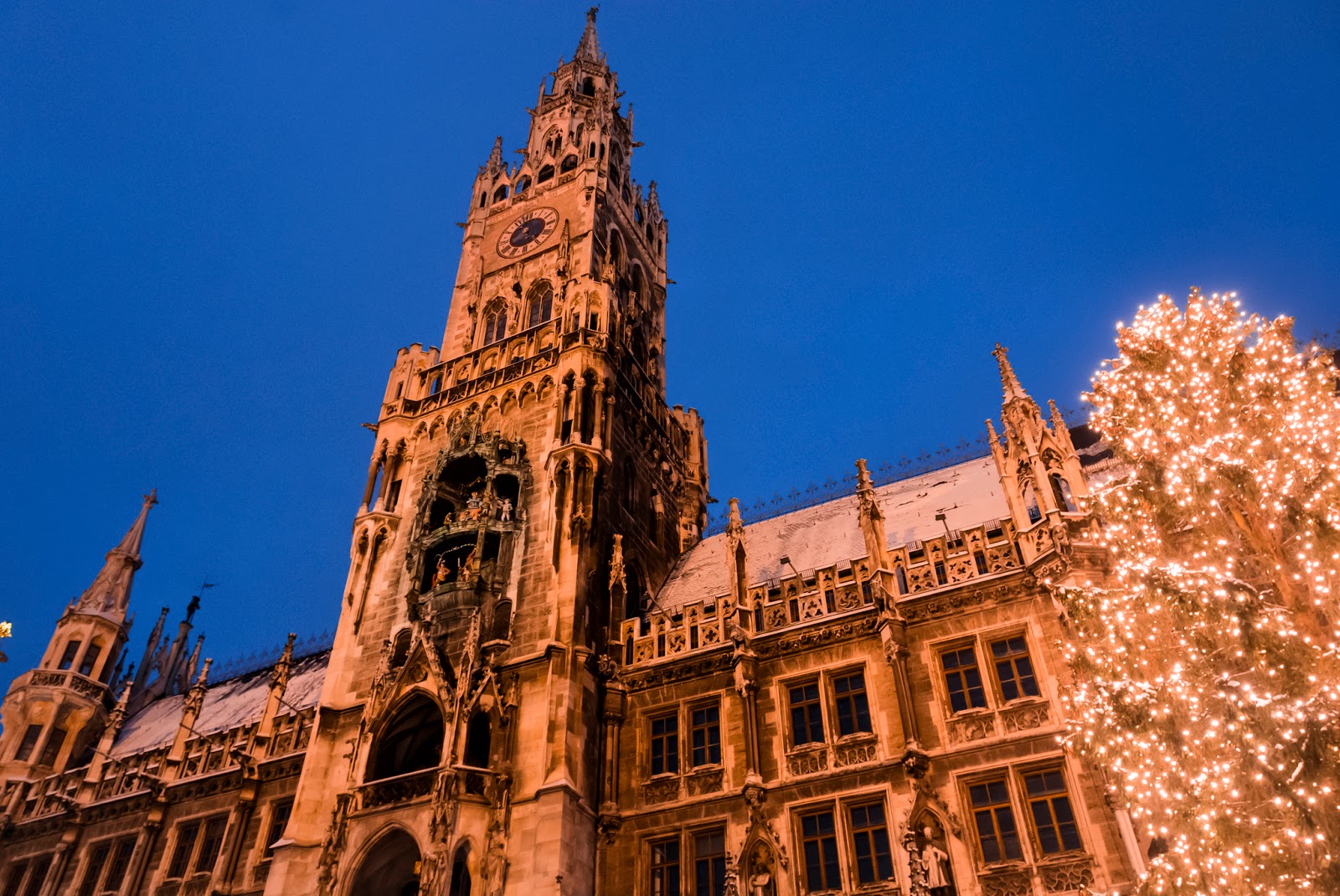Shortly after the Christmas festivities with my host family in Berlin came to an end, I headed 360 miles south to Germany's largest (in terms of geography) state, Bavaria, and its capital city of Munich. When you think of some typical German products and traditions, you may in fact be thinking of things that originated in Bavaria - particularly beer gardens, Lederhosen, BMW, and Oktoberfest. Therefore, Germans often complain that when foreigners think about Germany, they really think about Bavaria. Don't make that mistake! Keep following this blog to get to know the non-Bavarian parts of Germany.
Bavarians don't have a ton of fans elsewhere in Germany. Outside of Bavaria, it's highly fashionable to hate the state's wildly successful soccer team, Bayern München. The Bavarians' strange regional dialect, Bayerisch, is also reviled by non-Bayerisch speakers. I heard a few shopkeepers speaking it, and it sounds like a strange perversion of German that I cannot for the life of me understand. Non-Bavarian, native German speakers also find Bayerisch impossible to understand, so it's not just me.
But the fact remains that Munich is one of Germany's wealthiest cities and a popular tourist destination. I had actually been previously, about 6 years ago. But I knew I had to go back to experience it all again and, of course, get some killer pictures. I think I succeeded!
 |
| Munich's most famous landmark (I still remember it very clearly from my last trip, even after all these years) is the Neues Rathaus, or New City Hall. It was built between 1867 and 1874, and now houses the mayor's office, city council, and city administration |
 |
| The facade is in the neo-Gothic style and features many statues of members of the royal Wittelsbach family. Way at the top of the tower is the Münchner Kindl, the city's symbol, which is a young female monk with outstretched arms and a book in her left arm |
 |
| The column on the right depicts St. Mary at the top and was built in 1638. The cherub in the foreground is fighting the dragon of war |
 |
| In the inner courtyard of the New Town Hall |
 |
| Streets of Munich's old town |
 |
| Max-Joseph-Platz: On the left, one wall of the giant Residenz palace. Moving right, the statue depicts King Maximilian I, or Max Joseph, who was installed as Bavaria's king in 1806. He was a popular king who built plenty of grand buildings in Bavaria. On the right is the National Theater, which opened in 1818 but was damaged heavily in WWII |
 |
| This square is the Marienhof, which was left as a green space after the 1945 bombings. The towers in the background belong to the Frauenkirche, or Church of Our Lady. They are another famous Munich landmark, and weren't added to the church until nearly 400 years after its construction in the 1400s due to a lack of finances. Pope Benedict XVI occupied the archbishop's seat in this church in the 1970s and 1980s, back when he was still Joseph Ratzinger |
 |
| There are innumerable shopping passageways located all over Munich's Old Town |
 |
| The Asam Church was built in 1740 by two of the time's leading Rococo architects - the Asam brothers. This was their private chapel, and they purposely made it as grand as possible in order to show off what they were capable of designing. Here, notice how skinny the church is. Then, check out the mighty foundation rocks at the bottom, the legs dangling over the portico, and the starbursts on the door |
 |
| Wow! The Baroque interior is absolutely insane. It was definitely the most intricately decorated church I have ever been in. The ceiling is flat but gives the illusion of a dome |
 |
| The columns may look like marble, but they're painted fakes |
 |
| St. Michael's Church was built by Jesuits in the late 1500s and rebuilt after the WWII bombings. The statue shows Michael fighting a Protestant. Inside, there is the tomb of King Ludwig II, the "mad king" who built the famous Neuschwanstein Castle |
 |
| Munich's large and charming pedestrian zone was one of the first of its kind in Europe when it was built in 1972. Today, nearly 9,000 shoppers pass through per hour. This street was already the city's main commercial street in the 12th century |
 |
| Königsplatz features a few art museums |
 |
| Königsplatz |
 |
| Königsplatz |
 |
| The Old Town Hall, built between 1470 and 1480 and rebuilt after WWII, stands right next to the larger, flashier New Town Hall |
 |
| The Jewish Synagogue's wall is supposed to evoke the Wailing Wall in Jerusalem. The upper section represents the tent that held important religious wares during the 40 years of wandering through the desert during the Exodus |
I really enjoyed my first day there! I love that Munich has a concentrated Old Town with lots of historic architecture, all located in a pedestrian zone. In fact, there are so many churches in this area that when 5 p.m. hit, a chorus of church bell songs could be heard throughout the Old Town for 25 solid minutes.
That night, after meeting up with another participant in my program who is living in Munich and having a Bavarian white beer, I headed back to the hostel to rest up for the next full day of sightseeing. Sightseeing is hard work, but someone has got to do it. To be continued!


























